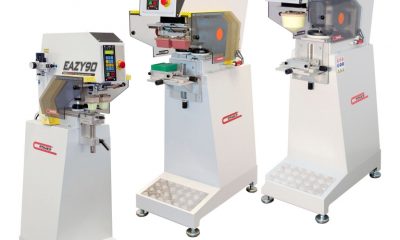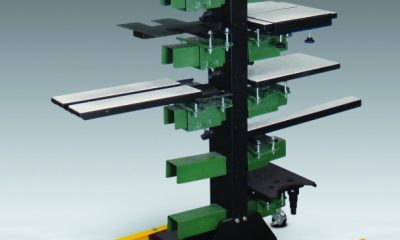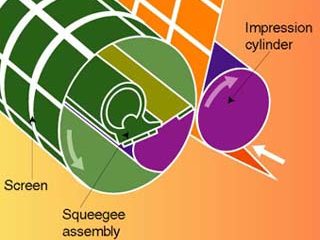On occasion, we are called in to resolve printing problems that unfortunately have expensive solutions. This is particularly the case when the problem involves automated pad printing.
One troublesome application we encountered involved pad printing 8000 components per hour with a single color. These components were approximately 12 x 1/2 x 1/16 in. in size. The feed mechanism was very sophisticated and would transport the items at the required speed to and from the printer.
On occasion, we are called in to resolve printing problems that unfortunately have expensive solutions. This is particularly the case when the problem involves automated pad printing.
One troublesome application we encountered involved pad printing 8000 components per hour with a single color. These components were approximately 12 x 1/2 x 1/16 in. in size. The feed mechanism was very sophisticated and would transport the items at the required speed to and from the printer.
Unfortunately, it appeared that the designers had spent most of their time working on the feed mechanism, and the pad press was treated almost as an afterthought. Part-locating devices at the print position restricted the pad shape that could be used. These locating devices also operated intermittently. The nests were designed such that the metal item bowed under the pressure of the pad. In addition, the pad-press stroke length had been increased to enable a print position nearly 3 in. below the bed of the press.
The effect of this setup was that the press’s cycle time was extended such that the print rate, dictated by the feed mechanism, could not be maintained. Even with the feed mechanism slowed down, the items were moving while being printed, and the apex of the pad was running through the center of the print and thinning the ink at this point.
The solution to the problem required a $40,000 rebuild of the equipment. The nests at the print position had to be upgraded and the location devices moved. This allowed for a pad that was shaped such that the apex was off the print area. The printing machine was lowered so that the stroke length–and consequently the cycle time–was reduced.
Because of the size or shape of the item to be printed, it is not always possible to achieve ideal presentation of the item to the press. It is vital, however, that a feed mechanism be designed around a pad-printing press, rather than the other way around. As a rule, the safest option is to buy the feed mechanism from the pad-press manufacturer and give the manufacturer total responsibility. Ancillary machinery manufacturers do not always understand the peculiarities of pad printing (although some are very knowledgeable), and it can result in being very expensive for all concerned.

 Case Studies2 months ago
Case Studies2 months ago
 Art, Ad, or Alchemy2 months ago
Art, Ad, or Alchemy2 months ago
 Andy MacDougall2 months ago
Andy MacDougall2 months ago
 Columns3 weeks ago
Columns3 weeks ago
 Editor's Note2 weeks ago
Editor's Note2 weeks ago
 Thomas Trimingham2 months ago
Thomas Trimingham2 months ago
 Marshall Atkinson2 weeks ago
Marshall Atkinson2 weeks ago
 News & Trends1 month ago
News & Trends1 month ago







